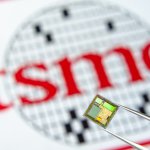The US should speed up the CHIPS Act, or risk being left behind

- The global semiconductor shortage has made the US realise the urgency to onshore its supply chains for critical components
- The Senate passed the US Innovation and Competition Act, which contains the CHIPS Act, in June
- The legislation is currently stalled in the House of Representatives, causing manufacturers to be restless
Six months ago, the US Senate passed an expansive bill to invest almost US$250 billion in bolstering US manufacturing and technology. The bill also included an allocation of US$52 billion to ramp up domestic production and fight the semiconductor shortage. The move was cheered by those in the industry, but the excitement was short-lived — the legislation stalled in the House of Representatives.
For context, the US Innovation and Competition Act, or USICA, passed the Senate with bipartisan support in June. The Creating Helpful Incentives to Produce Semiconductors for America Act, or CHIPS Act, which is tucked inside the broader competition bill, includes the aforementioned allocation for domestic semiconductor production and incentives to invest in new semiconductor manufacturing facilities in the US. It is also to establish a National Semiconductor Technology Centre.
The most recent development on the legislation was in November when Senate Majority Leader Chuck Schumer and House Speaker Nancy Pelosi announced an agreement to craft a version of the bill that could pass in both chambers. It has however not yielded any new proposals.
The US is among major countries around the world that have been racing to bolster their domestic semiconductor supply chains to fight the semiconductor shortage that has plagued industries over the past year.
To combat the semiconductor shortage, the US dreams big but acts slow
When a semiconductor company opens a factory in Taiwan, the government covers almost half of the land and construction costs, on top of subsidising a quarter of the equipment costs. Meanwhile in Singapore, government subsidies cut the cost of owning a computer-chip factory by more than that.
Then there are efforts in Europe to crank up financial incentives too, and China has had enormous subsidies over the past several years. Since 2015, the Eastern superpower has allocated at least US$180 billion in support for this industry.
That’s how the CHIPS Act came about, an obvious attempt by the US to ramp up its effort to entice more manufacturers to build domestic factories to produce computer chips. But as Democratic Senator (and co-sponsor of CHIPS) Mark Warner puts it, “It’s hard to see how a company in America or any normal, traditional market-based economy can compete against that kind of juggernaut,” in reference to the Chinese incentive scheme.
For the Semiconductor Industry Association (SIA), “the substantial subsidies offered by the governments of global competitors places the US at a competitive disadvantage in attracting new construction of fabs,” as per a July statement. While the subsidies by China may appear intimidating as it is, it is merely the appetizer.
By 2025, the country aims to achieve 70% self-sufficiency in high-tech industries, and by 2049 — the hundredth anniversary of the People’s Republic of China— it seeks a dominant position in the global market. If anything, it signals the urgency for more active US government involvement, and experts agree that a big bill doesn’t guarantee a favourable outcome.
For starters, the CHIPS Act should get going and even Commerce Secretary Gina Raimondo had urged the House of Representatives to immediately pass the legislation to avoid future supply interruptions and lower the country’s dependence on parts from China.
Companies in the US have been going back and forth over who can qualify for the incentives. For instance, Intel Corp CEO Pat Gelsinger has repeatedly suggested that the US taxpayers should subsidize only domestic companies. On the other hand, market-leading TSMC’s Chairman Mark Liu said doing so would be “negative” for America.
Separately, industry leaders and a group of 19 major business and labour groups had recently sent a letter to Congressional leaders to urge passage of legislation to fund US-based chip manufacturing and research. The letter reflects impatience over the failure of the House to act on a bill passed on June 8 by the Senate. “The need is urgent and now is the time to act. We look forward to working with you on this national priority,” the letter states.
Looking back, the US has traditionally held a dominant position in the global semiconductor industry, but given how the sector is caught in almost a continuous state of disruption, regaining market share might not be so simple. US chip assembly today represents only 12% of global production, down from 40% in the 1990s.










